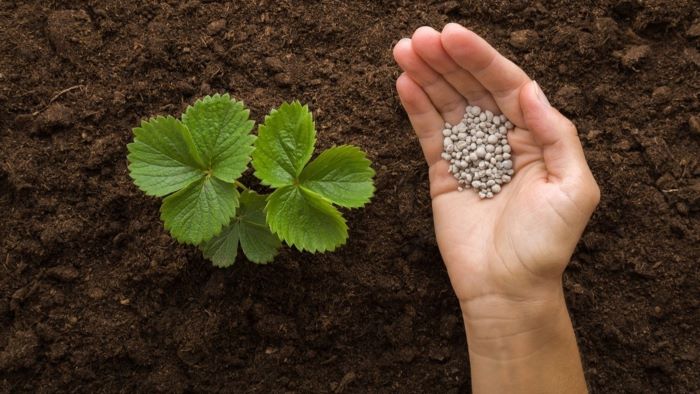If you love plants, you know how important it is to fertilize them regularly. Fertilizing plants is like feeding them with essential nutrients, which help them grow and thrive. But how do you fertilize plants like a pro? What are the best types of fertilizers to use? How often should you apply them?
In today’s discussion, we will address all of these questions and more. For instance, we will give you a quick guide on how to fertilize plants and make your garden look amazing. You will learn how to choose the right fertilizer, how to apply it correctly, and other related points.
By the end of this post, you will be able to fertilize plants and enjoy the fruits of your labor.
Contents
Why Plants Need Fertilizer?
As we know, plants are living organisms, they also need nutrients to grow and thrive. Just like humans, plants get some of their nutrients from the air and water, but they also rely on the soil to provide them with essential elements. Such as nitrogen, phosphorus, and potassium. These elements are often called macronutrients because plants require them in large amounts.
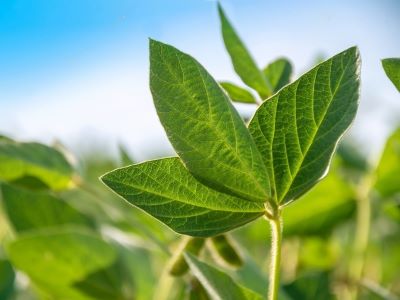
However, the soil may not always have enough of these nutrients for the plants, especially if it is poor, sandy, or heavily cropped. That’s why fertilizing plants is important to ensure their health and productivity.
Fertilizer is a natural or artificial substance that contains chemical elements, which improve the growth and productiveness of plants. Plus, fertilizer helps plants to do all these things:
- Produce more leaves, stems, roots, flowers, fruits, seeds, or nuts.
- Enhance the color, flavor, quality, and quantity of plant products.
- Increase the resistance to pests, diseases, drought, frost, and other stresses.
- Improve the soil structure and fertility by adding organic matter and beneficial microorganisms.
Types of Plant Fertilizers
There are many types of plant fertilizers available in the market. However, they can be classified into two categories: organic and inorganic. Organic fertilizers are derived from natural sources such as animal manure, compost, bone meal, blood meal, etc. They are rich in organic matter and beneficial microorganisms that improve the soil structure and fertility.
On the other hand, inorganic fertilizers are synthetic chemicals, which contain specific amounts of nutrients in a soluble form. They are fast-acting and easy to apply, but they may also have some drawbacks.
Here are some of the common types of plant fertilizers and their benefits:
1. Nitrogen Fertilizers
Nitrogen is the most important nutrient for plant growth, as it is involved in photosynthesis, protein synthesis, chlorophyll formation, and many other processes. Plus, these are usually applied to boost the vegetative growth of plants, such as leaves, stems, and roots.
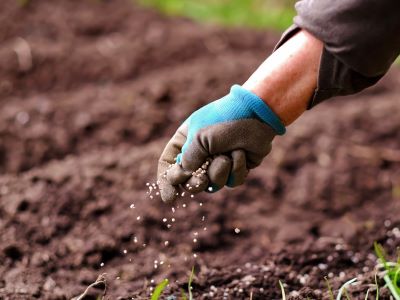
Some examples of nitrogen fertilizers are urea, ammonium nitrate, ammonium sulfate, etc. However, nitrogen fertilizers should be used with caution, as excess nitrogen can cause problems. Such as leaf burn, reduced flowering and fruiting, susceptibility to pests and diseases, and environmental pollution.
2. Compost
Compost is one of the best organic fertilizers for plants, as it provides a balanced supply of nutrients, organic matter, and beneficial microorganisms. It is made by decomposing organic materials such as kitchen scraps, garden waste, animal manure, etc. in a controlled manner.
Additionally, compost improves the soil quality by increasing its water-holding capacity, aeration, drainage, and pH balance. It also enhances the soil biodiversity by introducing beneficial microorganisms, which help in nutrient cycling and disease suppression.
3. Phosphorus Fertilizers
Phosphorus fertilizers are another essential nutrient for plant growth, as it is involved in energy transfer, cell division, root development, flower formation, seed production, etc. They are usually applied to stimulate the reproductive growth of plants, such as flowers, fruits, and seeds.
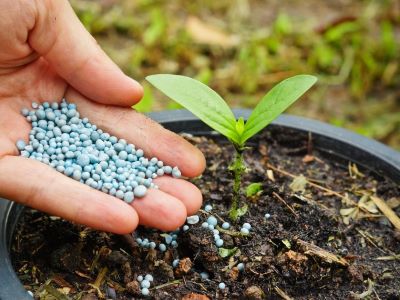
Some examples of phosphorus fertilizers are super phosphate, rock phosphate, bone meal, etc. However, phosphorus fertilizers should be used sparingly, as excess phosphorus can cause problems. Such as nutrient imbalance, reduced iron uptake, soil acidification, and water pollution.
4. Potassium Fertilizers
Potassium is the third major nutrient for plant growth after nitrogen and phosphorus. It is involved in many functions such as water regulation, enzyme activation, carbohydrate metabolism, stress tolerance, etc.
Furthermore, potassium fertilizers are usually applied to improve the quality and quantity of plant products such as fruits, vegetables, grains, etc. Some examples of potassium fertilizers are potassium chloride (muriate of potash), potassium sulfate (sulfate of potash), and potassium nitrate (nitrate of potash).
How to Fertilize Plants?
Fertilizing plants is not a one-size-fits-all process. Different plants have different nutrient requirements depending on their type, stage, and growing conditions. Therefore, it is important to follow some basic steps to fertilize plants effectively and efficiently:
- Step 1: Test your soil to determine its pH level, nutrient status, texture, and organic matter content. You can use a simple home test kit or send a soil sample to a laboratory for analysis.
- Step 2: Choose the right type of fertilizer for your plants based on their nutrient needs and soil conditions. You can use a general-purpose fertilizer for most plants or a specialized fertilizer for specific crops or situations.
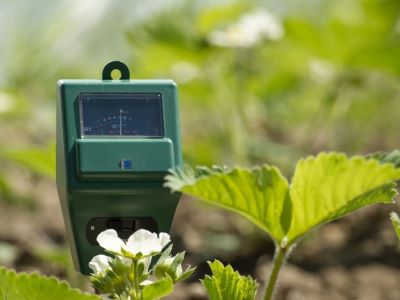
- Step 3: Calculate the amount of fertilizer you need based on the recommended rate for your plants and the fertilizer’s nutrient content.
- Step 4: Apply the fertilizer at the right time for your plants based on their growth cycle and environmental factors. You can apply fertilizer before planting (basal application), during planting (starter application), or after planting (topdressing or sidedressing).
- Step 5: Apply the fertilizer according to your plants and fertilizer type. You can use different methods, such as broadcasting, banding, drilling, foliar spraying, fertigation, etc.
- Step 6: Water your plants after fertilizing to dissolve the fertilizer and move it into the root zone. Avoid overwatering or underwatering your plants, as both can affect their nutrient uptake and health.
- Step 7: Monitor your plants for signs of nutrient deficiency or toxicity, such as yellowing, wilting, stunting, burning, etc. Adjust your fertilizer application accordingly if needed.
FAQs
When to fertilize plants?
The best time to fertilize plants depends on their type, stage, and growing conditions. Generally, you should fertilize plants when they are actively growing and need more nutrients. For example, you can fertilize annuals and perennials in early spring when they start to grow new leaves and buds.
How often to fertilize plants?
The frequency of fertilizing plants depends on their nutrient needs and the type of fertilizer you use. Generally, you should fertilize plants as often as they need it without overdoing it. For example, you can fertilize fast-growing plants more often than slow-growing plants.
What is the correct way to fertilize plants?
The correct way to fertilize plants is to apply the right type, amount, time, and method of fertilizer for your plants and soil conditions. You should also follow some best practices such as: testing your soil, choosing a suitable fertilizer, calculating the fertilizer rate, applying the fertilizer evenly and carefully, watering your plants after fertilizing, monitoring your plants for nutrient problems, and storing your fertilizer safely.
Conclusion
With this quick guide, you have just learned how to fertilize plants like a pro. Now you can enjoy the benefits of healthy and beautiful plants in your garden, balcony, or indoors. Fertilizing plants is not rocket science, but it does require some knowledge and care. Here are some key points to remember:
- Choose the right type and amount of fertilizer for your plants. Different plants have different needs, and too much or too little fertilizer can harm them.
- Follow the instructions on the fertilizer package or label. Do not over-fertilize or under-fertilize your plants. Apply the fertilizer at the right time and frequency for optimal results.
- Water your plants before and after fertilizing them. This will help the fertilizer dissolve and reach the roots, and prevent salt buildup and root burn.
- Use organic or natural fertilizers whenever possible. They are safer for the environment and your plants, and they provide more nutrients and beneficial microorganisms.
With this quick guide, you can fertilize plants and impress your friends and family with your green thumb.
Happy Gardening! 🌱🌻🌷

Hello, I’m Rose Lehman, the content writer of cozynest. I have been a gardener for over 5 years, and I have a certificate in master gardening from the Oregon State University Extension Service. I enjoy writing about all aspects of gardening, from the basics to the advanced, and from the practical to the creative. I also love to explore different types of gardens, cultures, and styles, and share them with our readers. My goal is to inspire and inform our audience, and help them grow their own cozynest.

